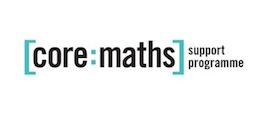GMC10: Optimising work processes
This list contains a collection of resources to help meet General Mathematical Competency 10 (GMC10). More resources to support T level Science can be found on our T Level science resource packages page.
GMC10 states:
Students are required to develop the skills necessary to be able to optimise work processes. They should be able to:
- Solve a problem within a science context, by:
- identifying and clearly defining the problem:
- demonstrating a thorough understanding of the context of the problem
- deciding on change to be made, taking into account:
- steps required to implement the change
- success criteria for measuring the impact of the change
- implementing the changes, using new technologies as appropriate:
- gathering data
- recording results
- evaluating the impact and continuing to monitor any changes:
- making recommendations for further improvement
- Apply the 8 stages of root cause analysis to investigate problems and/or customer complaint and recommend suggestions for improvement
- ALL
- STEM Club
- Presentation
- Open-ended task
- Information sheet
- Activity sheet
STEM Club
Dijkstra's Algorithm
Dijkstra's algorithm finds the shortest path for a given problem.- for example the shortest route between two cities. This algorithm is so powerful that it not only finds the shortest path from a chosen source to a given destination, it also finds all of the shortest paths from the source to all destinations.
Dijkstra's algorithm is widely used in the fields of operational research, computer science and artificial intelligence. The problem requires students to find the shortest a van driver should take to travel from Milton Keynes to Hoddesdon.
Linear Programming
Linear Programming involves creating a function that represents a real life problem. The aim is to optimise this function given certain constraints. Simple examples of linear programming will have few variables and constraints, however, real life situations will have many more variables and constraints that will need to be considered.
This resources asks students to advise the manager of a high street shop on the optimal solution when recruiting staff, given a set of constraints.
Presentation
A doll's house
This activity explores how the production of a doll's house can be organised by using a Gantt chart. The objective of the activity is for students to produce a Gantt chart for a project of their own choice. No specific prior knowledge of Gantt charts is needed, the task mainly requires number skills and problem solving.
Open-ended task
GAIM Activities: Practical Problems
These practical problems are adaptations of real-life situations, manageable in the classroom or local environment, that require students to apply their mathematics. There is no specific answer to each practical problem and students produce solutions at a level of sophistication appropriate to their mathematical attainment.
Recommended resources include:
P01: Fashion workshop
P16: Beach Guesthouse
P20: Design a Better Timetable
P27: Computer Engineers
P35: Deliver the Goods
P39: Winston's Garage
Information sheet
Garden design
This package of Core Maths resources ask students to produce a quote for a building a garden following a simple plan. Students are asked to use volume and area calculations, unit conversions and create precedence table and activity network.
Activity sheet
Bin packing
This package of resources explore how to solve bin packing problems using the first fit decreasing algorithm.
The teacher guide presentation contains an introduction to the topic through the plumber’s dilemma before working through the best possible algorithms to apply to solve a number of similar problems.
Build or buy?
This series of activities involves mortgage finance, interest rates, income tax, national insurance, scheduling, Gantt diagrams and estimation. The tasks can form a large project or be used as stand-alone lessons.




